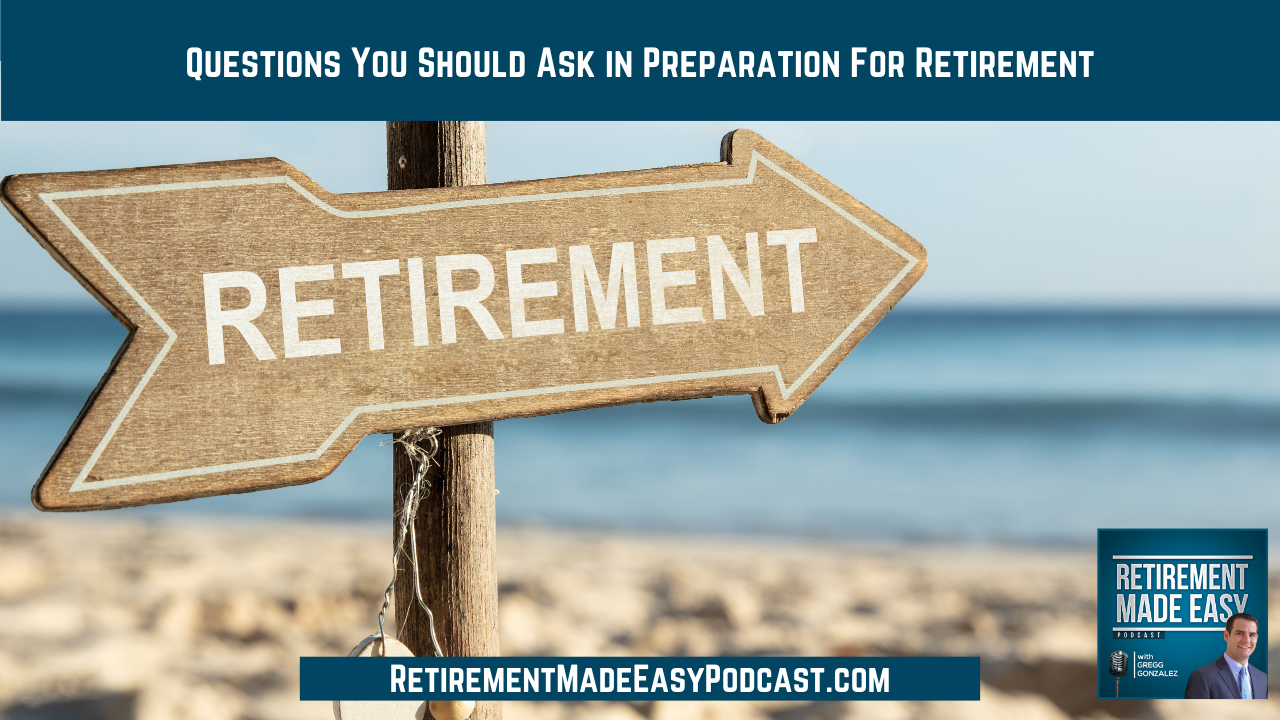
You may believe your retirement is all set, with savings secured and timelines mapped out, but then the questions start flooding in, shaking that sense of certainty. This episode reveals the questions people start asking as retirement gets closer, from Roth conversions and Social Security to how inherited money works..
Gregg walks through questions from listeners and clients that reveal the lesser-known stuff, like why turning 73 or 75 matters way more than you’d expect, what changes if you’re still working, or how one checkbox on a beneficiary form can shift who ends up with your money. There’s also a closer look at long-term care insurance and why the math on it surprises most people.
This episode will make you stop and rethink your assumptions so that it doesn’t cost you dearly in the future.
You will want to hear this episode if you are interested in...
- (0:00) The real retirement questions you should ask sooner rather than later.
- (03:45) Listener question #1 - Roth conversions and the five-year rule.
- (05:04) Listener question #2 - Roth IRA vs. Roth 401(k) contribution limits.
- (07:44) Listener question #3 - Beneficiary designations: pro rata vs. per stirpes.
- (10:38) Listener question #4 - Social Security growth after full retirement age.
- (14:37) Listener question #5 - What if Social Security income becomes tax-free?
- (14:41) Listener question #6 - Required minimum distributions and age updates.
- (19:28) Listener question #7 - Why long-term care insurance costs as much as it does.
- (24:18) Listener question #8 - When retirement income and market dips collide.
The Hidden Gotchas in Roth Rules You Thought You Knew
Most people think they’ve got Roth IRAs and Roth 401(k)s all figured out, until they don’t. One listener thought their Roth conversion had a five-year waiting period, and they weren’t wrong, but they weren’t exactly right either. The five-year rule does apply, but only if you're under 59½ at the time of conversion. Over that age? It’s irrelevant.
Then there’s the confusion between Roth IRAs and Roth 401(k)s. They’re both “Roth,” sure, but they operate on completely separate rules, income limits, and contribution ceilings. That means yes, you can contribute to both, and no, the IRS doesn’t combine them into a single bucket. The takeaway? Knowing the distinctions can unlock tens of thousands in tax-advantaged growth.
When Legacy Planning Becomes Real
No one likes imagining worst-case scenarios, but if you’ve named beneficiaries, you’ve already opened the door to legacy planning. One listener asked what happens if their child passes before they do, and the answer hinges on a single checkbox: pro rata or per stirpes. Choose wrong, and your grandkids may get nothing.
It’s easy to gloss over it until it’s too late to change. Most people assume the money goes to a surviving spouse or equally across remaining heirs, but that’s not always true. The per stirpes option follows the bloodline, while pro rata reroutes everything to the remaining listed beneficiaries - A tiny detail, massive ripple effect.
Market Volatility Isn’t the Villain - Being Unprepared Is
The markets dropped, people panicked, and suddenly the strategy that “felt fine” stopped working. When you're drawing down retirement income while your investments are shrinking, you're hitting reverse on your portfolio. That’s why I always coach people to think in buckets, short-term, mid-term, and long-term, so income doesn't have to rely on whatever the market's doing right now.
This isn’t about predicting downturns; it’s about knowing they’ll come and preparing anyway. The people who weather downturns best aren’t the ones with the best returns, they’re the ones with the most resilient plans.
Resources & People Mentioned
- 3 Steps to Retirement Planning
- Ed Slott - America’s IRA Experts - https://irahelp.com/
Connect With Gregg Gonzalez
- Email at: Gregg@RetireSTL.com
- Podcast: https://RetireStrongFA.com/Podcast
- Website: https://RetireStrongFA.com
- Follow Gregg on LinkedIn
- Follow Gregg on Facebook
- Follow Gregg on YouTube



